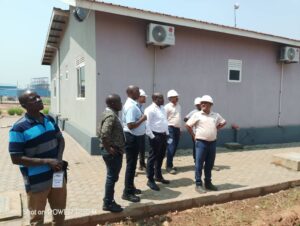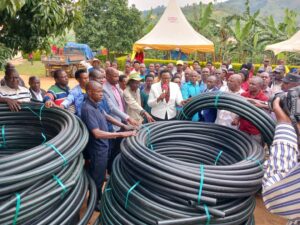
Every drop of clean, safe drinking water that flows from our taps represents a triumph of engineering and planning. Behind the scenes, dedicated professionals work tirelessly to ensure water safety. While traditional water safety planning has been the steadfast guardian of our water supply, it’s time to embark on a journey to tackle a new challenge – the impacts of climate change.
In the realm of water safety, traditional Water Safety Plans (WSPs) have long been the trusted allies, providing a comprehensive shield against contamination and hazards. These plans meticulously navigate the entire water supply chain, from the source to our glasses. However, as climate change casts its shadow, our guardians need new armor. The rise of Climate-Resilient Water Safety Planning reflects this need for adaptation and fortification.
Picture traditional WSPs as the reliable guardians of water quality, ensuring that what we drink is pure and untainted. Now, meet their evolution: Climate-Resilient WSPs (CR WSPs). They’re not just about water quality; they’re about quantity too. CR WSPs acknowledge that climate change doesn’t just impact the cleanliness of our water but also its availability. They are our answer to climate-induced challenges, designed to equip utilities with the power to not just withstand but thrive amidst change.
How do we put the principles of CR WSPs into action? The journey begins with a systematic assessment of climate-related risks. It’s like charting unknown waters, understanding how the stormy seas of climate change affect our defenses. This includes scrutinizing existing measures, assessing risk profiles, and identifying potential new threats. The key to this voyage is prioritization – understanding which challenges to tackle first.
As we sail deeper into the world of CR WSPs, we encounter practical solutions. Think of these as building resilient ships to navigate the unpredictable climate seas. Elevating critical assets above flood levels or diversifying raw water sources are like reinforcing our hulls to withstand the waves. And just as important as the ship itself are the strategies to influence customer usage, much like adjusting our sails to harness the wind in our favor.
As our voyage continues, we confront the storms that climate change brings. Shifts in precipitation patterns, dwindling water resources, and water quality impacts are like the unpredictable elements of our journey. But every challenge is an opportunity in disguise. We must engage with our surroundings and adopt a long-term perspective, understanding that the climate is always changing. It’s about embracing the inevitable with resilience.
To navigate these uncharted waters, we need a skilled crew. In our case, that means collaboration with experts from diverse fields; meteorologists, climatologists, hydrologists, and disaster risk reduction specialists. They’re the compass guiding us through the complexities of climate impacts. But it doesn’t stop there. Our crew needs training, and we must build partnerships to ensure our voyage’s success.
After all is said and done, it’s clear that adaptation is not a choice but a necessity. Climate change is our new reality, and CR WSPs are our compass, charting a course toward a resilient and sustainable future. With a crew of experts, a ship of resilience, and the determination to face the challenges head-on, we can ensure that clean, safe drinking water continues to flow, even in the face of a changing climate.


